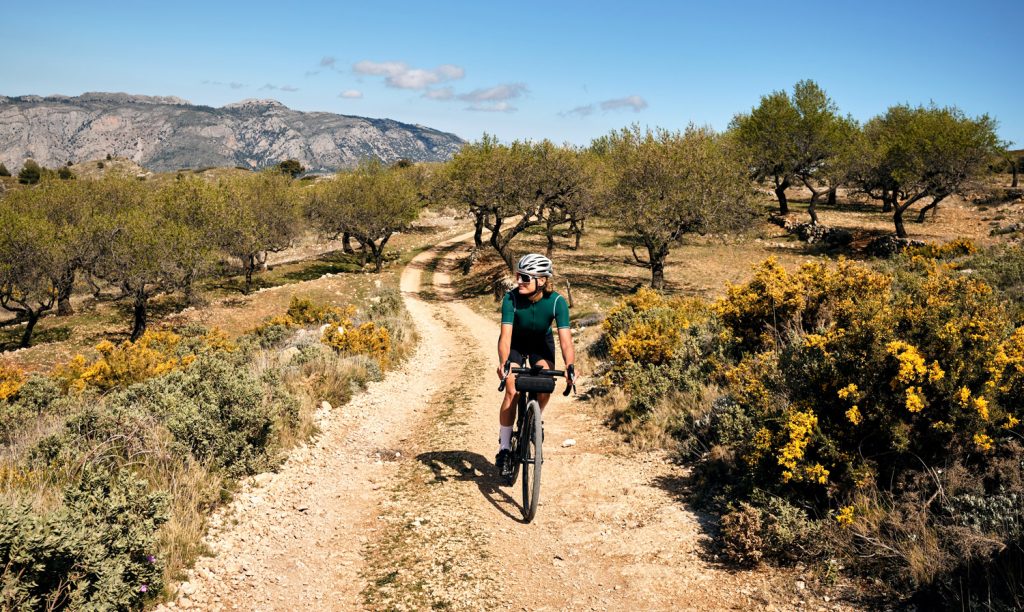
Defining Gravel
The Encyclopaedia Britannica define gravel as “aggregate of more or less rounded rock fragments coarser than sand (i.e., more than 2 mm in diameter). Fragments in gravel range in size from pebbles (4–64 mm in diameter), through cobbles (64–256 mm), to boulders (larger than 256 mm).”
There lies the challenge – if the definition of gravel from a geological perspective is everything from sand to boulders, how can we define it from a cycling perspective?
How We Grade Our Gravel Riding Trips
When we started thinking about how to grade our new range of gravel riding holidays, we realised that the trail surfaces our groups will be riding on play a bigger part in the ride experience than perhaps it does for some other cycling disciplines. What is the surface made of? How wide are the trails? Is the surface uniform in nature? Will riders need to make a choice about which line they ride? How steep are the gradients on the climbs and the descents? Are the trails likely to be wet or dry? The level of thought we’ve put into defining the grades for our gravel riding holidays would make a geologist proud!
As always, the amount of height gain and the distances covered each day play a large part in determining the grade but for our gravel riding trips, the surface is also a factor. We’ve come up with five different grades of gravel, with each one designed to fit with the overall grade of the holiday. This means for example if you travel on one of our gravel riding holidays which we grade as 3, alongside the expected distances, you can also expect the terrain you are riding on to be a mixture of gravel trails mostly up to grade 3. Due to the nature of the routes, there may be the odd small section of slightly higher grade surface but these will be short manageable sections and the grade and terrain information on the holiday will give the best indication of the gravel surfaces you’ll encounter on your holiday. There can also be exceptions from location to location where some trails might be sand based, dry and loose and others featuring more slippery grassy and/or muddy sections depending on recent weather.
Skedaddle Gravel Riding Grades
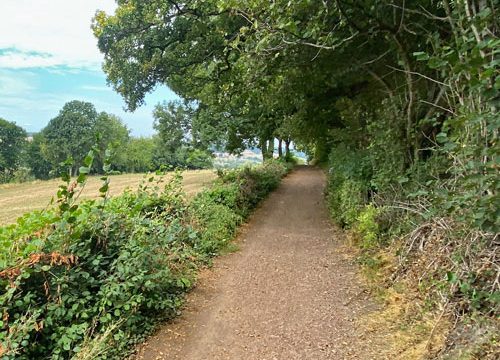
Grade 1
All of the non-paved sections will be wide tracks and not technically demanding. The gravel trails will generally have a hardpacked and smooth rolling surface. You may come across sand and/or mud in places where it can be more difficult to gain traction. If you’re bringing your own bike, we would recommend a minimum tyre width of 35mm.
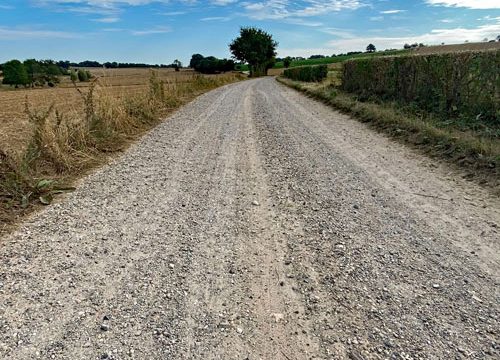
Grade 2
The riding will be on undulating or rolling trails, with occasional moderate to challenging climbs and descents on non-paved surfaces. The gravel trails are primarily non-technical wider tracks and can have a more loose or variable surface. You are likely to encounter loose gravel, stones and sandy sections. You may come across some muddy trails depending on recent weather and there might be short sections where you need to walk with your bike. If you’re bringing your own bike, we would recommend a minimum tyre width of 35mm.
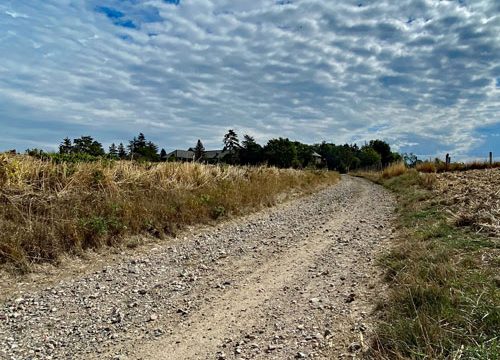
Grade 3
The gravel trails encountered are a mix of wider trails that can be rough in places and non-technical singletrack. Trails can vary more in width and in surface type. You will likely encounter some steeper sections, loose gravel, stones and on occasion stretches of sand and/or mud to navigate. You will need to choose your line more carefully and might need to move from one side of the trail to the other to find the smoothest line and the best grip/least rolling resistance. There might be short sections where you need to walk with your bike. If you’re bringing your own bike, we would recommend a minimum tyre width of 38mm.
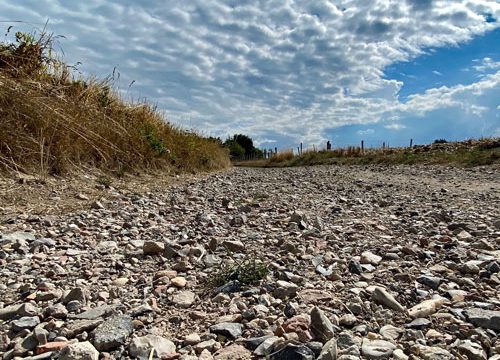
Grade 4
The gravel trails will be demanding in nature and can include sections of much larger pebbles/small rocks, loose gravel, sand and mud. You will definitely need to pick your line carefully in places across uneven terrain. Traction may be difficult on climbs and descents can be loose, steep and a little sketchy at times. You will need the skill to handle sections of technical terrain, including narrow singletrack, deep gullies and rocky sections. There might be short sections where you need to walk with your bike. If you’re bringing your own bike, we would recommend a minimum tyre width of 38mm.
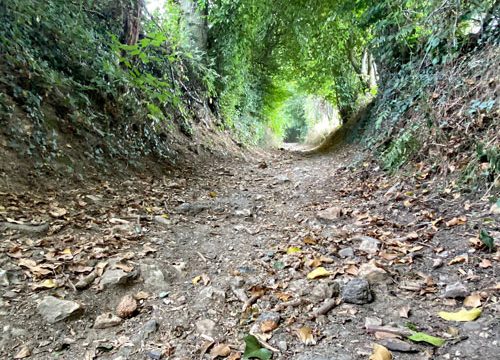
Grade 5
The gravel trails will be borderline mountain bike riding in places. Expect a real mix of surface types, widths and materials. You might encounter mud, roots, rocks, sand and loose gravel. There will definitely be some singletrack and some of it might have small roots, rocks or other obstacles to ride over/around. Riders with mountain bike experience will love this type of riding. If you’re bringing your own bike, we would recommend a minimum tyre width of 45mm.
It’s All About The Bike
While there is a gravel bike stereotype – drop handlebar, wide volume tyres, disc brakes, more relaxed geometry than road or cyclocross bikes, everyone’s view of what makes a ‘perfect’ gravel bike will vary. You don’t “need” a gravel bike to take part in our range of gravel trips, but they are super fun to ride and the features will make the terrain more comfortable and enjoyable to handle. Bigger volume tyres run at lower pressures will allow for more grip and a smoother ride, perfect for the terrain we’ll be covering on our holidays.
In the trip information, we explain exactly what the terrain and trail surfaces will be like on your chosen route, plus we give advice on the type of bike and crucially, the minimum recommended width of tyre that we recommend if you’re going to be bringing your own bike.
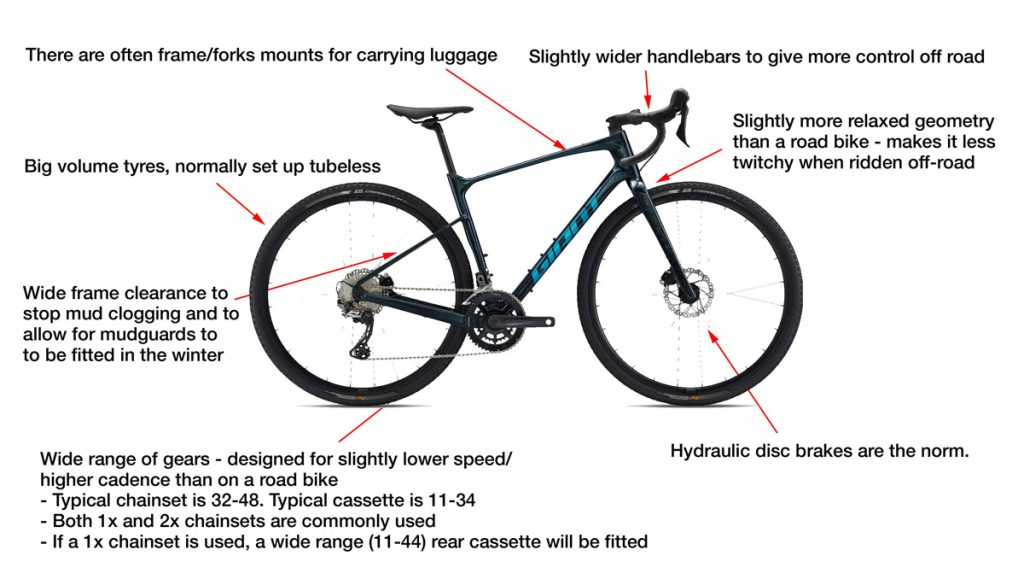
Mixing It Up
One of the best aspects of gravel riding is the ability to mix up the types of surfaces you’ll be riding on. On all of our gravel riding trips, we include a wide range of surfaces and during each day’s riding, we will switch from one to another at regular intervals. One minute you might be riding along a farm track, next gliding through some woodland and the next taking on some ancient singletrack. All of these different sections will likely be linked by short sections of tarmac. While we’re going to keep the proportion of away-from-the-road riding as high as possible, sections of tarmac are the perfect opportunity to take on board some water/snacks, relax a little, admire the view and chat with your fellow riders. Each day we will list the overall distance and the amount of climbing, so you will have a really good understanding of what you’re signing up for.
The make-up of the trails you will be riding is useful to know, but ultimately gravel riding is about flexibility, adventure and fun. Part of the thrill of gravel riding is mixing things up and we’re sure that our new range of gravel holidays will have the right combination to help make your holiday perfect!
Sounds good?
Explore our full range of Gravel Riding Holidays and all the incredible destinations you can go to! Or head to our blog for even more inspiration and advice on everything cycling.
.png)

